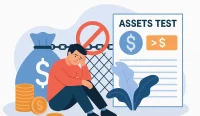You’re sitting in an interview, and the hiring manager asks: “Tell me about your leadership experience.” Your mind goes blank. You know you have leadership skills and problem-solving abilities, but you can’t think of specific examples to share. This frustrating scenario happens to countless job seekers who struggle to articulate their professional achievements into compelling stories.
The truth is, you have more impressive stories than you realize. The challenge isn’t a lack of experience—it’s knowing how to identify and structure your professional narratives effectively. This comprehensive guide reveals nine powerful frameworks to help you uncover and craft stories that will make you unforgettable in any job interview.
Why Your Stories Matter More Than You Think
Most job seekers make two critical mistakes when preparing for interviews. First, they wait until the last minute to prepare their stories, scrambling to think of examples during the actual interview. Second, they underestimate the value of their experiences, believing their everyday accomplishments aren’t worth discussing.
The reality is that employers want to understand how you think, solve problems, and contribute to their organization. Your stories demonstrate these qualities better than any resume bullet point ever could. Even seemingly small accomplishments can showcase leadership, problem-solving, and initiative when framed correctly.
- Start preparing stories when you begin your job search, not when you get the interview call
- Every experience has value—what seems routine to you might be impressive to an employer
Hire Candidates Who Nail the Interview
Storytelling can make or break a job interview — the best candidates know how to communicate their value clearly. Post your job on WhatJobs today and connect with professionals who are prepared, confident, and ready to succeed.
Post a Job Free for 30 Days →The 9 Story Frameworks That Will Transform Your Interview Performance
1. The Complaint Method: Turn Frustrations Into Success Stories
The complaint method isn’t about whining—it’s about identifying situations where you took action to improve things. Think about times you complained about a coworker, a broken process, or a failing project. What did you do to address these issues?
Maybe you had a difficult conversation with a problematic colleague that improved your working relationship. Perhaps you created a workaround for a project that was falling apart. Or you identified and fixed a process that wasn’t working efficiently. These situations demonstrate problem-solving, relationship management, and initiative—all highly valued skills.
2. Timeline Excavation: Document Your Growth Journey
Examine your career progression by looking at where you started versus where you ended in each role. What was your situation when you began the position? What had you accomplished by the time you left? This growth trajectory tells a powerful story about your development and impact.
Consider projects you completed, relationships you improved, or performance metrics you enhanced. Even if you stayed in the same company, different roles or responsibilities show growth. These before-and-after snapshots demonstrate your ability to learn, adapt, and deliver results.
3. The Crisis Method: Showcase Your Problem-Solving Under Pressure
Crisis situations often reveal our true capabilities. Think about times when everything seemed to fall apart—a team member quit during a critical project, an IT system crashed affecting the entire organization, or a major client threatened to leave.
How did you respond? Did you rally the team to complete the project? Did you find a workaround for the technical issue? Did you meet with the client to salvage the relationship? These crisis moments showcase your ability to think quickly, lead under pressure, and find solutions when others might panic.
4. The Intern Test: Share Your Hard-Won Wisdom
Imagine you’re mentoring a new intern who knows nothing about your role. What lessons would you teach them? What wisdom have you gained through experience that would help them succeed?
These lessons often come from challenging situations, difficult bosses, or complex projects. The insights you’ve gained and how you’ve applied them demonstrate your learning ability and professional maturity. Sharing these lessons shows you can mentor others and contribute to team development.
5. Scale Relativity: Leadership Exists at Every Level
Many job seekers believe they lack leadership experience because they’re not in management positions. This couldn’t be further from the truth. Leadership manifests at every career level through initiative, problem-solving, and positive influence.
- A retail associate who reorganizes the stockroom for efficiency shows leadership
- A receptionist who creates a better check-in process demonstrates leadership
- A junior analyst who catches a critical error before it causes problems exhibits leadership
Don’t underestimate your influence. Leadership is about making things better, not just managing people. Your future employer wants to see this quality regardless of your current position.
6. The “Would I Do It Again?” Test: Validate Your Decision-Making
Reflect on your past decisions and projects. Which ones would you repeat exactly as you did them? This question reveals situations where you made good judgments, showed confidence, and achieved positive outcomes.
These “repeat-worthy” experiences demonstrate your decision-making skills, confidence, and ability to deliver results. They show you can be trusted with important responsibilities and that your judgment is sound—qualities every employer values.
7. Follow Your Emotions: Identify Your Most Meaningful Accomplishments
Think about times when you felt particularly proud, relieved, or even nervous about your work. These emotional responses often indicate situations that were important to you and likely significant to your professional development.
Maybe you felt proud completing a project that others couldn’t finish. Perhaps you felt relieved after having a difficult but necessary conversation with a colleague. Or you were nervous presenting to senior leadership but received excellent feedback. These emotional markers point to stories worth telling.
8. Before and After Snapshots: Demonstrate Your Impact
Create clear before-and-after comparisons of situations you’ve improved. What was the situation before you got involved? What actions did you take? What was the result?
This could be implementing a new process that improved client satisfaction, resolving team conflicts that enhanced workplace morale, or proposing a new service that management approved and you successfully launched. These snapshots clearly demonstrate your ability to identify problems, implement solutions, and create positive change.
9. The Other People Angle: Leverage External Validation
Consider why people seek you out for help, thank you for your assistance, or specifically request to work with you. This external validation reveals your reputation and the value others see in your contributions.
Maybe colleagues regularly come to you for technical advice. Perhaps clients specifically request you for their projects. Or maybe you’ve received recognition for going above and beyond for others. These external indicators provide powerful evidence of your professional value and impact.
Hire Candidates Who Nail the Interview
Storytelling can make or break a job interview — the best candidates know how to communicate their value clearly. Post your job on WhatJobs today and connect with professionals who are prepared, confident, and ready to succeed.
Post a Job Free for 30 Days →How to Implement These Frameworks
Now that you understand these nine story frameworks, here’s how to put them into action:
- Choose three frameworks that resonate most with your experience
- Spend 10 minutes on each brainstorming potential stories
- Don’t worry about perfecting the stories yet—focus on identifying the raw material
- Look for patterns in your experiences that align with common interview questions
- Practice telling these stories until they feel natural and compelling
Remember, these stories don’t need to be about saving the company from bankruptcy or achieving extraordinary results. They’re about your everyday work life—the choices you make, the problems you solve, and the positive impact you create. These seemingly small moments reveal your character, work ethic, and potential value to future employers.
Frequently Asked Questions
Q: How can I find compelling stories if I think my experience is too basic?
A: Every experience has value when framed correctly. The 9 Easy Story Hacks to Nail Your Next Job Interview frameworks help you identify leadership, problem-solving, and initiative in any role. Even entry-level positions offer opportunities to demonstrate these qualities through process improvements, relationship building, or going above and beyond basic requirements.
Q: How many stories should I prepare for an interview?
A: Aim to prepare 8-12 stories using the 9 Easy Story Hacks to Nail Your Next Job Interview methods. This gives you flexibility to choose the most relevant examples based on the specific questions asked. Having multiple stories ensures you won’t go blank and can adapt your responses to different interview scenarios.
Q: What if my stories don’t have perfect outcomes?
A: Imperfect outcomes can actually strengthen your stories if you focus on what you learned and how you handled the situation. The 9 Easy Story Hacks to Nail Your Next Job Interview emphasize authenticity over perfection. Employers want to see how you think, adapt, and grow from challenges, not just your successes.
Q: How do I make my stories more compelling and memorable?
A: Use the STAR method (Situation, Task, Action, Result) to structure your stories, and include specific details, numbers, and outcomes when possible. The 9 Easy Story Hacks to Nail Your Next Job Interview frameworks help you identify the most impactful elements of your experiences to highlight in your storytelling.
Real-World Success Story
Sarah, a marketing coordinator, initially struggled to identify compelling stories for her interviews. Using the “Scale Relativity” framework, she realized that reorganizing the company’s digital asset library—something she considered routine—actually demonstrated leadership and process improvement skills. She structured this story around the problem (disorganized files slowing down projects), her solution (creating a new filing system), and the result (30% faster project turnaround times). This “small” accomplishment became her go-to example for questions about leadership and initiative, helping her land a senior marketing role.
Ready to Transform Your Interview Performance?
Don’t let another interview opportunity slip away because you can’t articulate your value. These nine frameworks will help you uncover the compelling stories that already exist in your professional background. Start preparing today, and you’ll never go blank in an interview again.
Ready to put these strategies into action? Browse current job opportunities and start preparing your stories using these proven frameworks. Your next interview could be the one that changes your career trajectory.
Remember: You have more impressive stories than you realize. The key is knowing how to identify and present them effectively. Use these frameworks to uncover your professional narratives and watch your interview confidence soar.




